|
Pac-Man (JP) is a video game created by Toru Iwatani and developed by Namco. It stars the titular character of the same name.
Originally developed as an arcade game, it has been remade and re-released many times on various consoles such as the NES and the Game Boy. The Tengen-published NES version was the third of three licensed Tengen games released for the NES.
The NES port is also included as a short demo in the Masterpiece section within the Wii U version of Super Smash Bros. for Nintendo 3DS/Wii U, and it's set to be re-released once again in the game selection of the NES Classic Edition.
Gameplay[]
|
He was a Superstar in the arcades. Then he gobbled his way into home video game history. Now, after 10 years, PAC-MAN is still as lovable and fun as ever! You'll have a blast moving PAC-MAN around the baffling maze, gobbling up all the dots, racking up points galore--all the while avoiding getting eaten by the cute but unfriendly ghosts. If you remember the awesome excitement PAC-MAN generated, you're ready to relive the phenomenon, If you've missed out on him all these days, it's time you kicked off a second decade of fun--with PAC-MAN today! |
| — Official NES game description |
The gameplay of Pac-Man is simple and dynamic; The player controls Pac-Man in four directions only with the D-Pad; and the only other button funcional it's the START, for pausing the game.
The game starts with three lives, and the objective is to collect (eat) all the Pac-Dots of the screen, avoiding the ghosts (or monsters, as called in some translations) that has its unique characteristics of chasing. If Pac-Man touches the ghosts a life is lost. The challenge takes place in a blue maze of black background, the layout doesn't change after every stage completed, but the action turns more frantic and enemies become more hostile.
Occasionally fruits will appear, if collected will conceive the player different amounts of points; And an extra life can be achieved at each 10,000 points.
Power Pellets (the big and flashing points on the screen), if touched, will cause the ghosts to turn blue and will give Pac-Man the ability to eat them; The player will get a 200 point bonus for each ghost eaten that doubles for each ghost eaten (200, 400, 800 and 1600).
Between the conclusion of certain stages of the game, small intermissions are displayed.
Pac-Man was originally programmed to be endless, but there is a glitch that can be reached after 256 completed mazes, which will render the game unplayable.
Characters[]
There are few characters in the game; All them later reappears in the franchise alongside with the protagonist:
- Pac-Man, the yellow and round glutton is the only playable character;
- The Ghost Gang are the enemies that tries to surround Pac-Man in all forms; in the original release (both Japanese and western) was given to them names and nicknames; but the U.S. translation of their nicknames were converted in later games in their official names: Blinky, Pinky, Inky, and Clyde.
Items and Collectibles[]
Below is the list of items and collectibles of the game; each one has its respective amount of points;
- Pac-Dot - 10 points
- Power Pellet - 50 points
- Cherry - 100 points
- Strawberry - 300 points
- Orange - 500 points
- Apple - 700 points
- Grapes - 1000 points
- Galaxian - 2000 points
- Bell - 3000 points
- Key - 5000 points
As mentioned before; each ghost eaten in order gives the player the double of points; the first ghost gives 200 points, the second ghost gives 400 points, the third ghost gives 800 points and the fifth and final ghost if eaten gives 1600 points.
- - Galaxian is a character from a game of same name which appears in Pac-Man as collectible; the presence of this specific sprite in the game is a homage to the Galaxian game released in 1979 (one year before Pac-Man), and was later turned in a recurring appearance in the franchise.
Re-releases and compilations[]
NES version:
- Pac-Man 2: The New Adventures (Super Nintendo) - a 16-Bit recreation;
- Classic NES Series: Pac-Man (Game Boy Advance);
- Wii Virtual Console;
- 3DS Virtual Console;
- Wii U Virtual Console;
- A short demo included on Super Smash Brs. for Wii U;
- Available for the NES Classic Edition in every region variant.
Game Boy version:
- PACMAN: Special Color Edition (Game Boy Color) - a colored enhancement;
- 3DS Virtual Console;
Arcade version:
- PAC-MAN Collection (Game Boy Advance);
- NAMCO Museum: 50th Anniversary (GameCube/Game Boy Advance);
- Namco Museum DS (Nintendo DS);
- Namco Museum Remix (Wii);
- NAMCO Museum Megamix (Wii);
It's also possible to access the game through the titles:
- PAC-MAN World 2 (GameCube);
- PAC 'N ROLL (Nintendo DS);
- PAC-MAN Party (Wii);
Trivia[]
- The original box art for the NES version uses the character designs from the 1982 Pac-Man cartoon.
Gallery[]
| Main article: Pac-Man (video game)/gallery |
References[]
External links[]
| Pac-Man series | |
|---|---|
| Main Characters | Pac-Man • Ms. Pac-Man • Blinky • Pinky • Inky • Clyde |
| Arcade series | Pac-Man • Ms. Pac-Man • Super • Land • Mania • Collection • Vs. • Championship Edition 2 Plus • Museum + |
| Pac-Man World series | World (Re-Pac) • World 2 • World 3 • World Rally |
| Party games | Pac-Man Fever • Pac-Man Party (3D) |
| Other games | Attack • 2: The New Adventures • In-Time • Maze Madness • Pix • 'n Roll • Pinball Advance • Galaga Dimensions • Ghostly Adventures • Ghostly Adventures 2 |
| Related | Namco (Bandai Namco) • Namco Museum • Toru Iwatani • Mario Kart • Super Smash Bros. |
